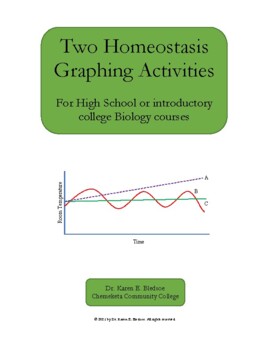Two Homeostasis Graphing Activities
- PDF
What educators are saying
Description
These two paper and pencil activities are aimed at high school and introductory college level. They can be used as homework, for individual work, or for small group work.
Homeostasis During Exercise: Using a table of physiological measurements taken on a human subject during exercise, students graph and compare interacting changes (body temperature and perspiration; breathing rate and blood oxygen saturation; heart rate and blood pressure) and draw conclusions about negative feedback mechanisms.
Understanding negative vs positive feedback: Students interpret a graph of a thermostat over time to understand a negative feedback system. They graph blood clotting protein and estrogen to see how positive feedback systems work. Finally, students interpret a complex graph of the interaction between blood sugar and insulin.





